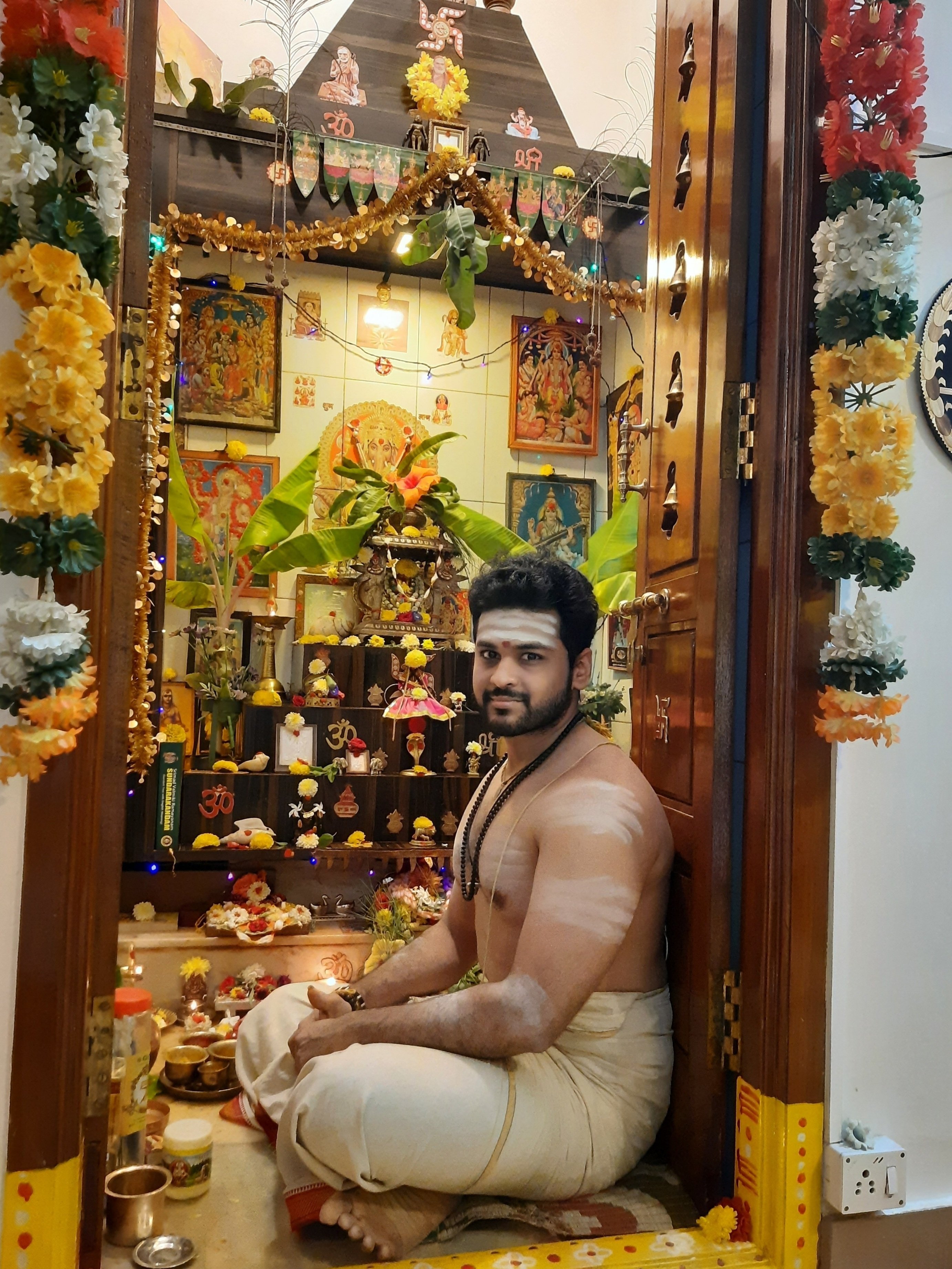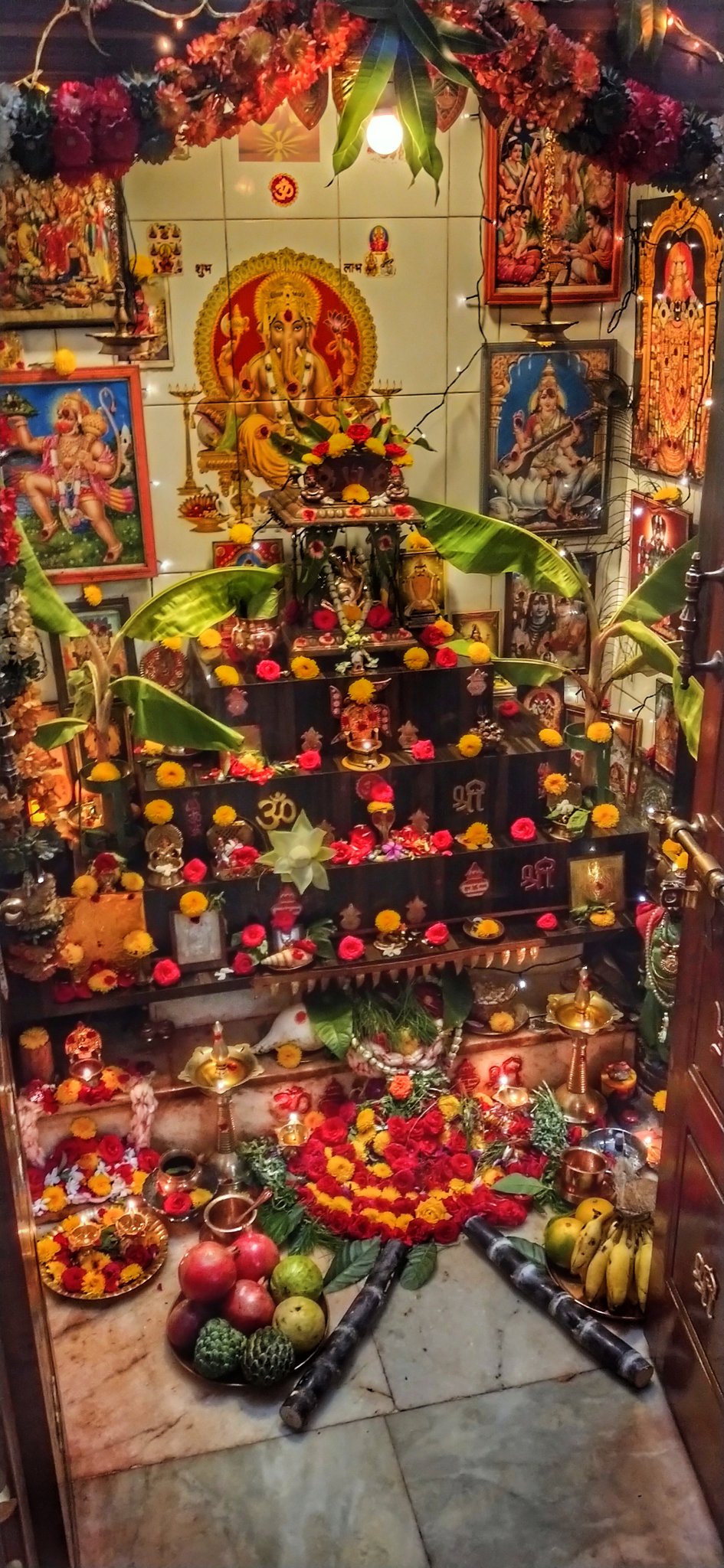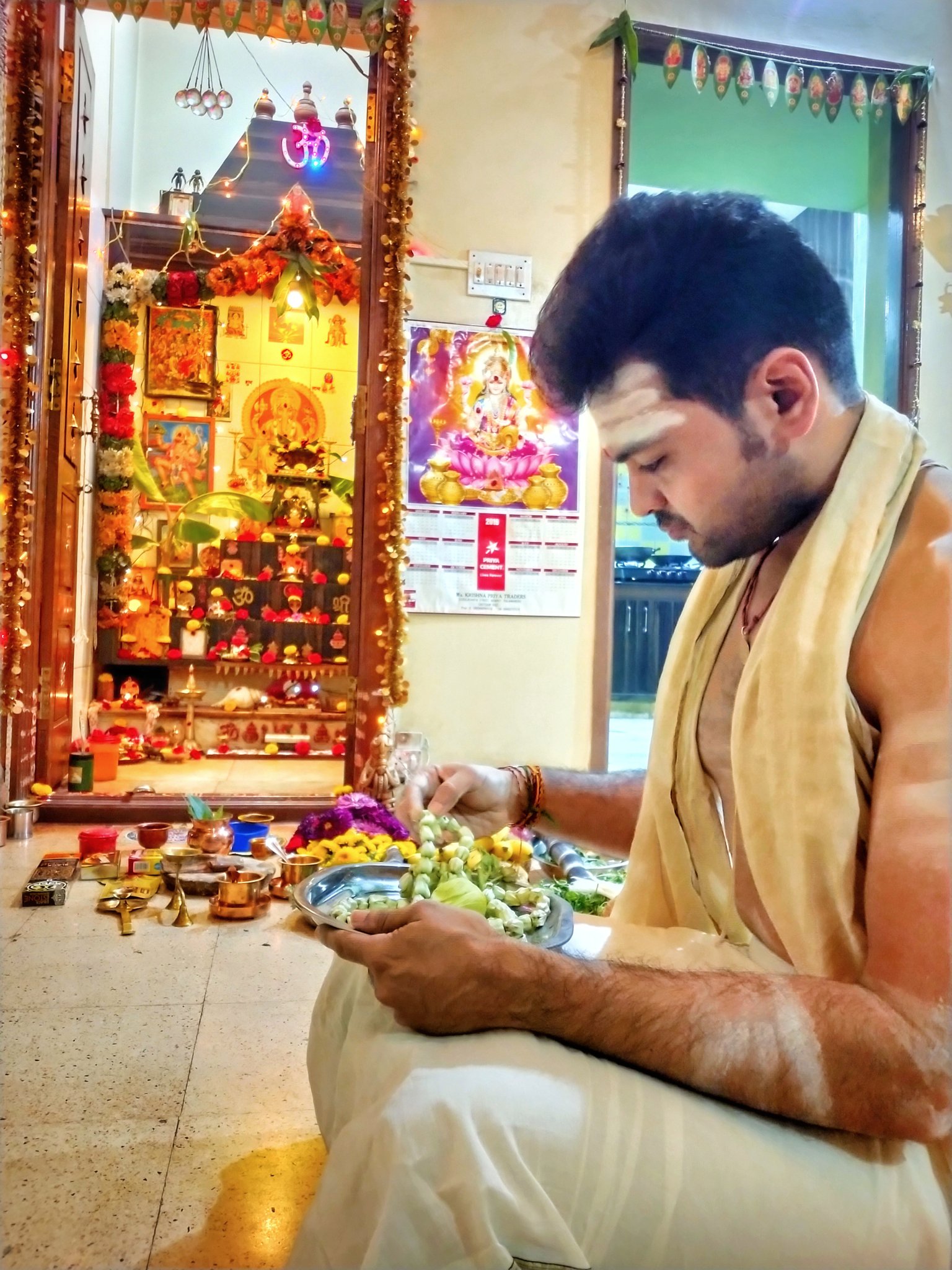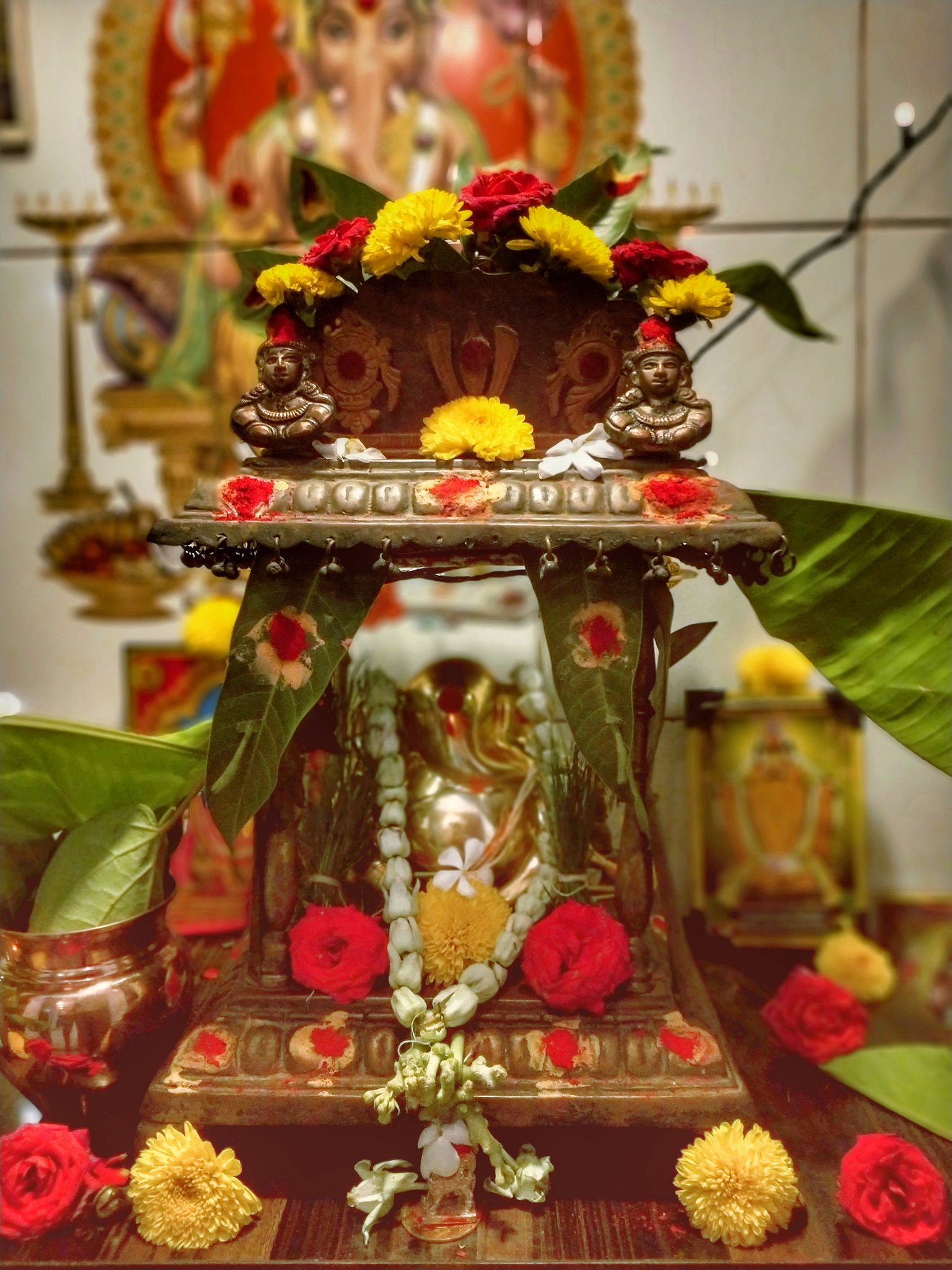 |
| Ganesha at home |
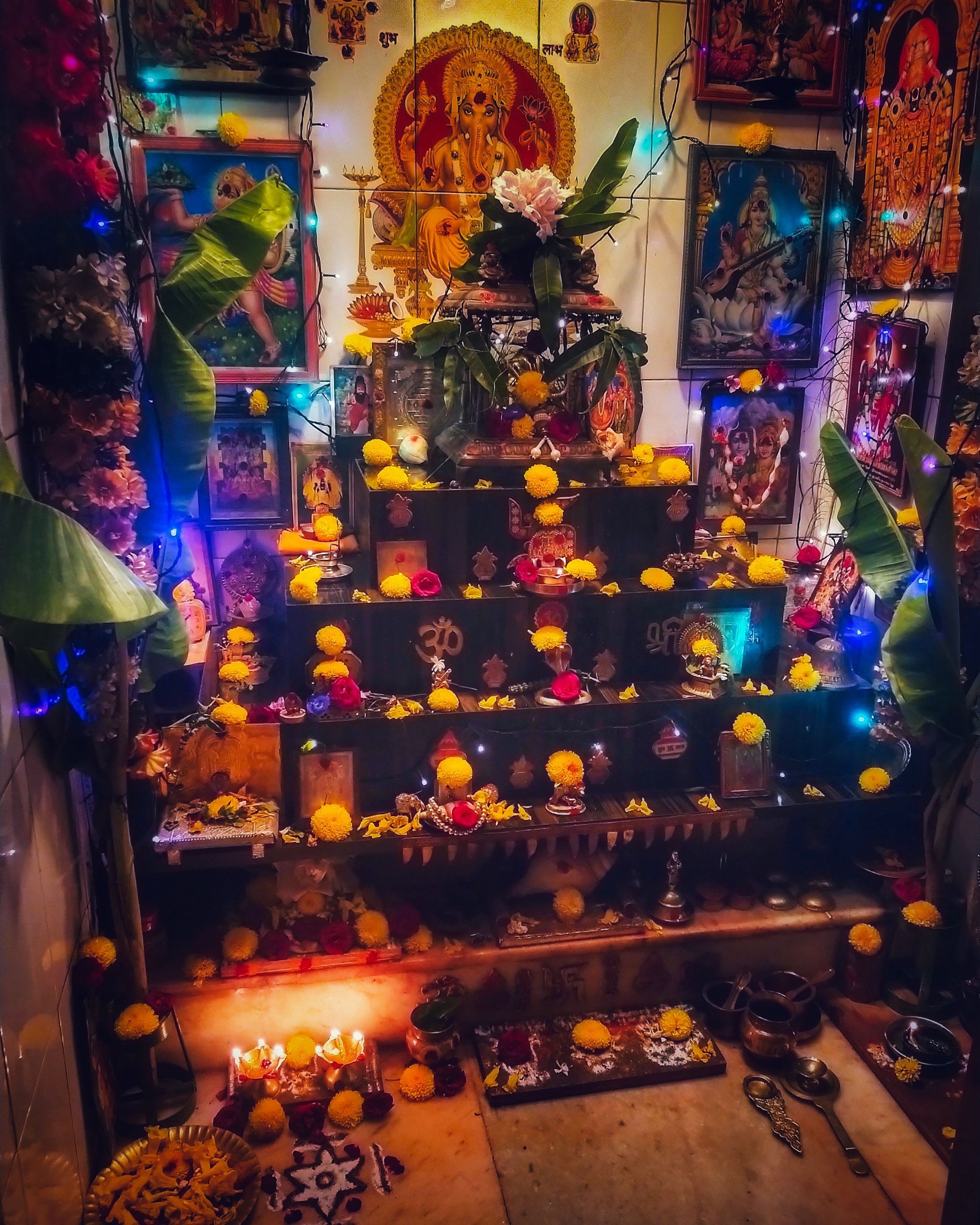 |
| Gowri Vratha |
Gowri Puja Vidhi
Ganesha puja is preceded by Gowri vratha on the previous day or sometimes on the same day depending on the tithi. Each of our homes represent the maternal home of Goddess Gowri. So we invite her to her our homes. Usually she's invoked in the form of clay murthi or in Haldi. Alankaara (decoration) is performed for Gowri.
It can be anything from a simple pushpa alankaara to decking her up with jewels & other grand ornaments. Then we prepare two deepams decorated with chandan & kumkum along with 2 flowers. Deepam is Lakshmi.
Gowri vratha is performed by womenfolk of the home & Ganesha by men. Now we prepare what is known as Ekarthi deepam which has two wicks, it has to be joined in at the ends before being lit. Only using this deepam should the other deepams be lit. Not directly by matches
First chant shuklam baradharam... Followed by the invocation of guru, mata, pita, acharaya by chanting guru brahma guru... This is followed by Deepa aahavanam by chanting bho deepa brahmaswarupena mantram...
Now we drive away the bhootas who reside on the left side of our bhujas (shoulders). This is done by putting some akshatam (rice mixed with haldi) over the left shoulder while chanting Aagamaartham tu devanaam gamanaarthantu raakshasaam.... While chanting this we ring the Ghanta.
Before proceeding with the Gowri puja itself we invoke Ganesha followed by Kula Devata, Griha devata, Grama devata, ilavelpu devata & istha devata. This is followed by taking Sankalpam by chanting Shube shobane muhurtee...
Sankalpam is followed by Kalasa puja. Decorate the water filled Kalasa with chandan, haldi & kumkum on 3 sides. Dip betel leaves or mango leaves which will be used for prokshana(purifying) other puja samagris. Kalasa water is a personification of Ganga herself.
Chant kalashasya mukhe Vishnuh mantra.. This will complete the avahaana of Ganga. Using this Kalasha water perform prokshana over all puja samagris & yourselves also. Using this Ganga jal & haldi, make a small Ganesha murthi. This is known as Haridra Bimbha Ganapathi.
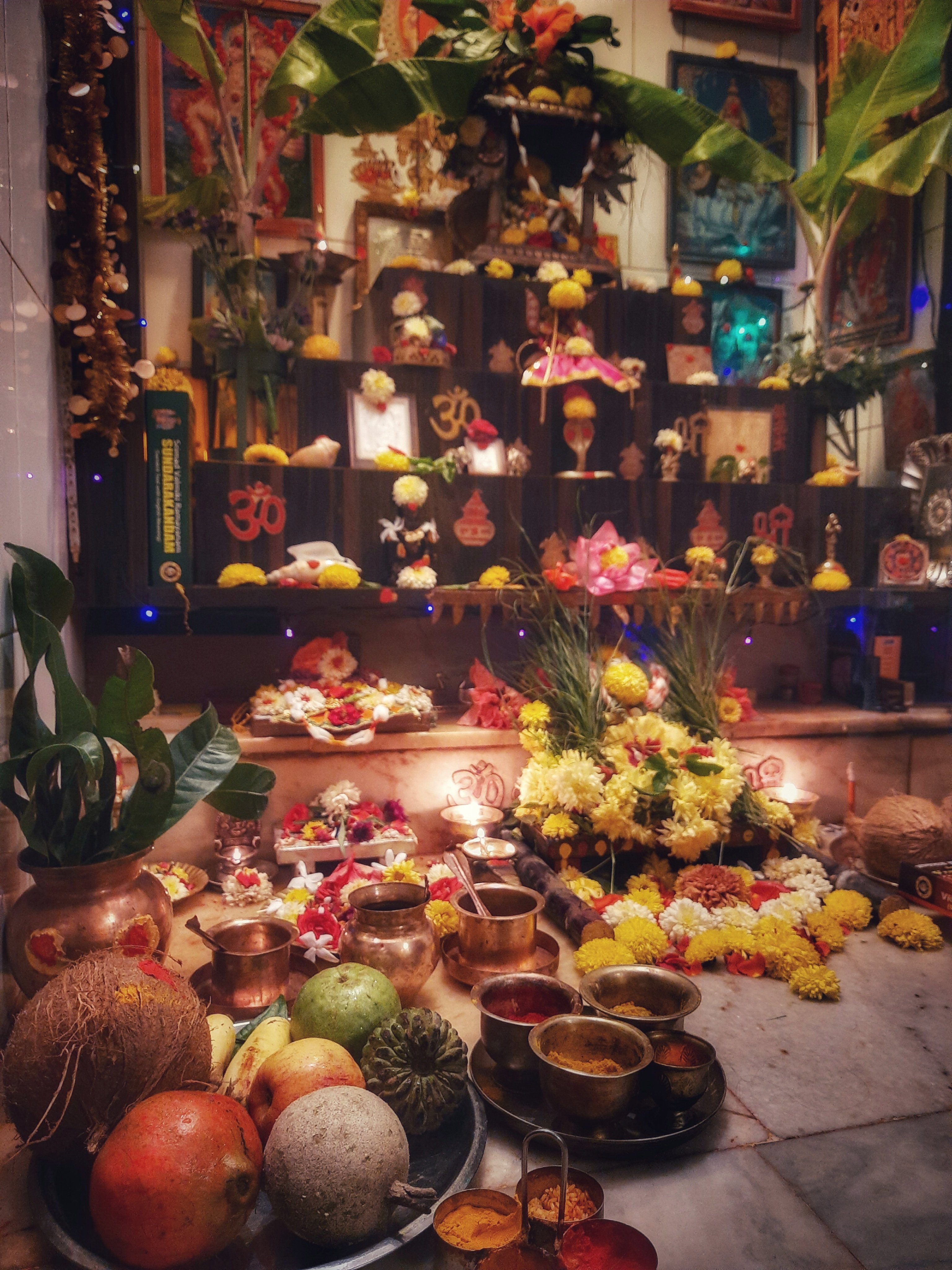 |
| Kalasa puja |
Now aavaahana (invocation) of Ganesha is performed by chanting any Ganesha shloka. I usually chant sumukhascha ekadantascha.... Ganesha has to be invoked compulsorily before invoking any other deity including Gowri. Now we invoke Gowri by chanting om shree swarna gowri devi aavahayaami, ratna simhasana samarpayaami mantra.... This is followed up by chanting Swarna gowri ashtothram or Lakshmi ashtothram. Offer a pushpa for each of the 108 names of Devi.
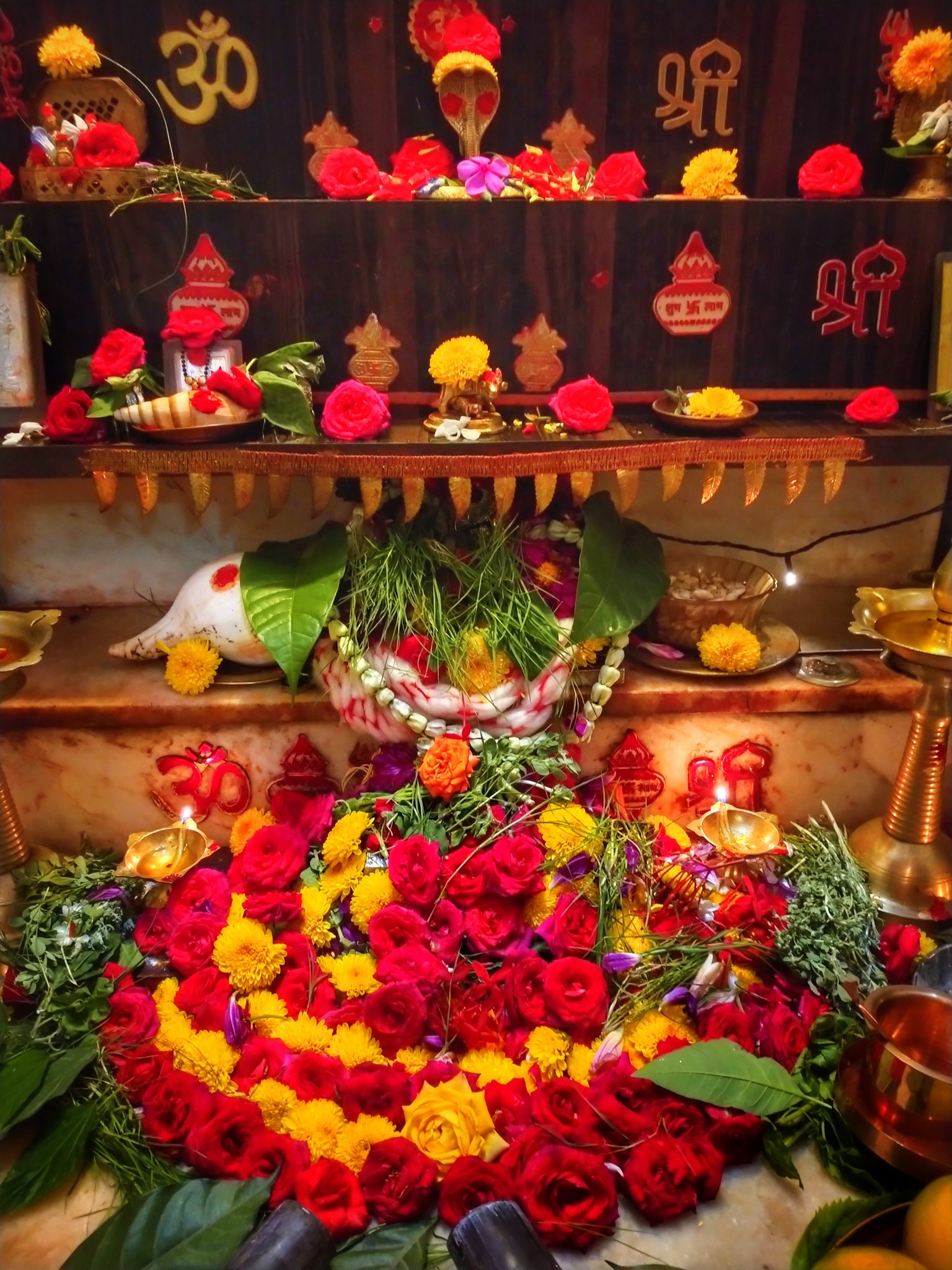 |
| Gowri |
Follow the ashtothram by offering Dhoopam (agarbhatti) , deepam, Naivedhya, tambulam(coconuts, betel leaves, areca nut) I usually chant yam vayu atmane namaha dhoopam aagrapayami mantra for dhoopa, rm agni aatmane namaha for deepam, gayathri for naivedhya.
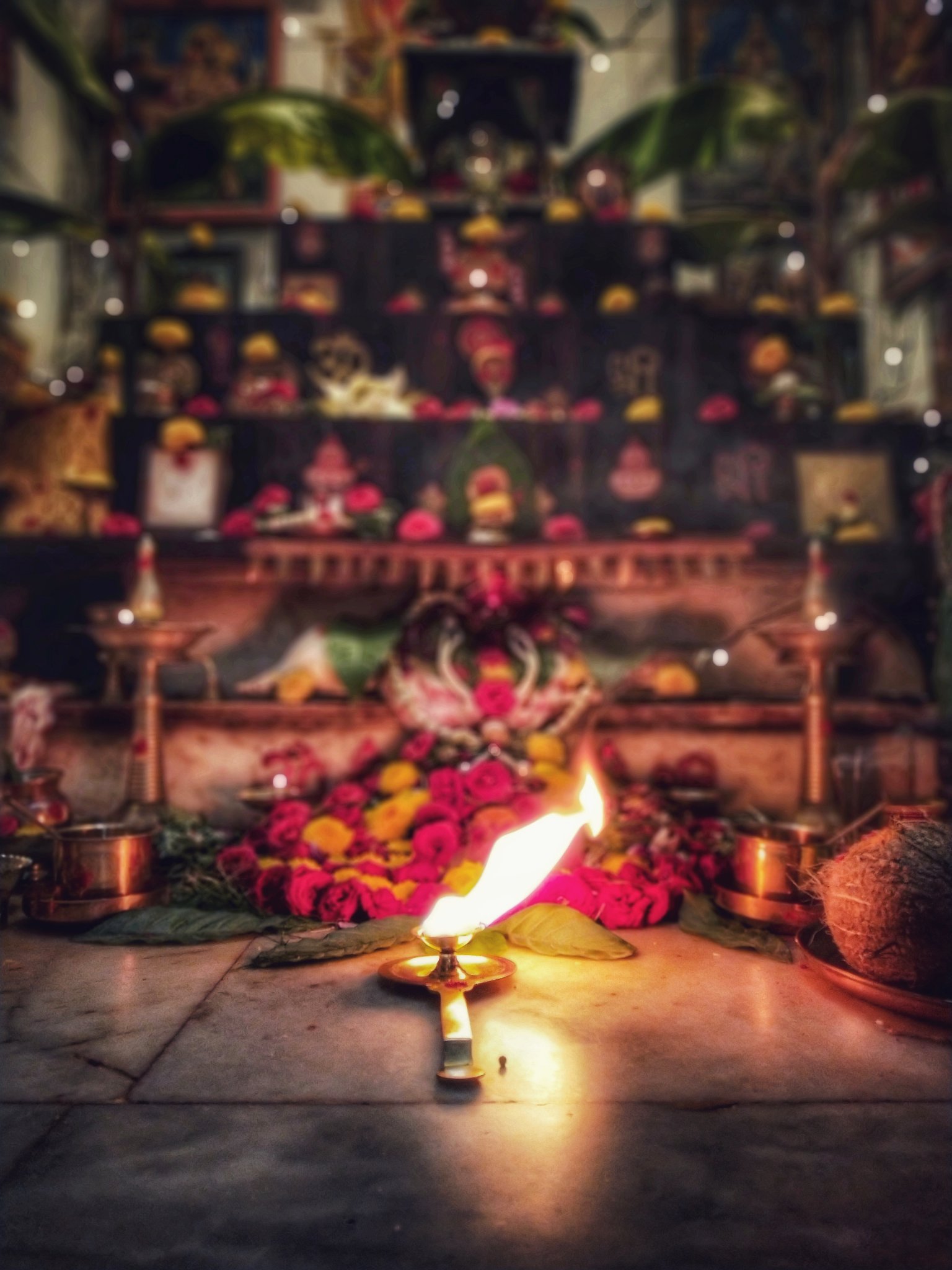 |
| Mangalaarathi |
This is followed up by Maha mangalarathi for Gowri. You can chant Hiranya patram madhooh purnam dadati mantra for this. This is followed by Pradakshana (parikrama). You can chant yaani kaani cha papani during this. This will conclude the Gowri puja.
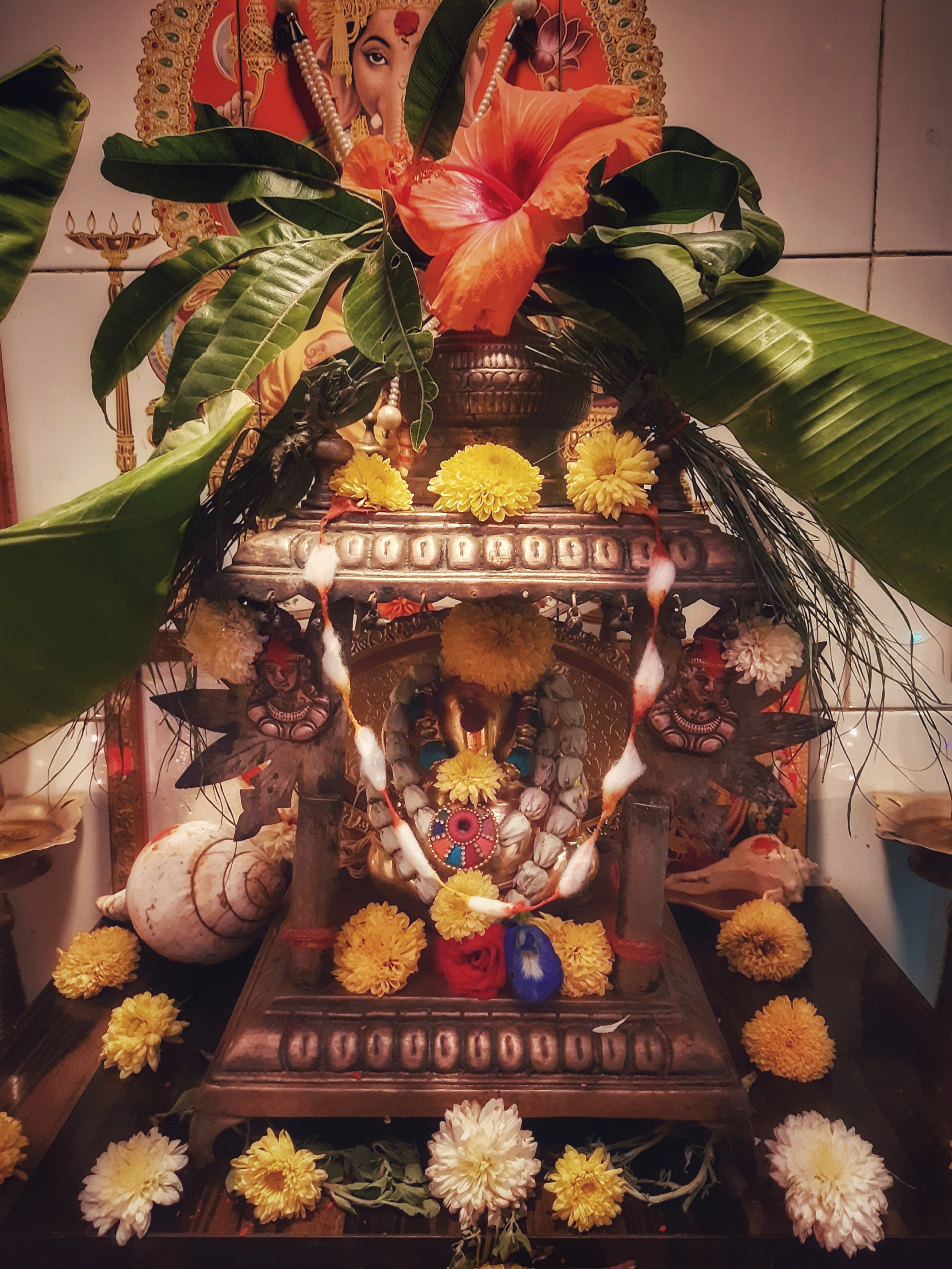 |
| Ganesha |
Ganesha Puja Vidhi
Gowri puja is followed up by Ganesha the next day or next tithi. The procedure is almost similar to the above, yet a little different. Its a very exhaustive ritual, but I'll try to describe it in a condensed manner. The Shodashopachara puja (16 step ritual) is started with the Avahana & Pratishthapana of the Ganesha vigraham i.e.invoking the deity. This is to be done compulsorily if you are placing clay Vigraha of Ganesha in the puja.
This is followed by Asana samarpanam, meaning offering a variety of flowers to Ganesha. This is then followed up with Padya Samarpanam i.e. Washing of Ganesha's feet with water. This is followed by Pushpa samarpanam, meaning offering a variety of flowers to Ganesha. This is then followed up with Padya Samarpanam i.e. Washing of Ganesha's feet with water.
This is followed up by Panchamritha snanam where we bathe the murthi with milk, honey, ghee, sugar & curd. This can be performed while chanting dadhimadvajya samyuktam mantra... This Panchamritha mixture is later consumed as prasada after all the rituals are concluded.
Panchamritha snana is followed by Shuddhokha snana, where the murthi is washed with Ganga jal. You can chant Gange cha Yamune cheva mantra for this. Then we wrap Ganesha in new cloths. This called Vastra samarpanam. Panchamritha snana is followed by Shuddhokha snana, where the murthi is washed with Ganga jal. You can chant Gange cha Yamune cheva mantra for this. Then we wrap Ganesha in new clothes.
You can chant dashadravya samyuktam sugandham su manoharam... mantra while offering Dhoopam. For Deepam you can chant saajyam ca varti samyuktam vahninaa yojitam.... Mantra.
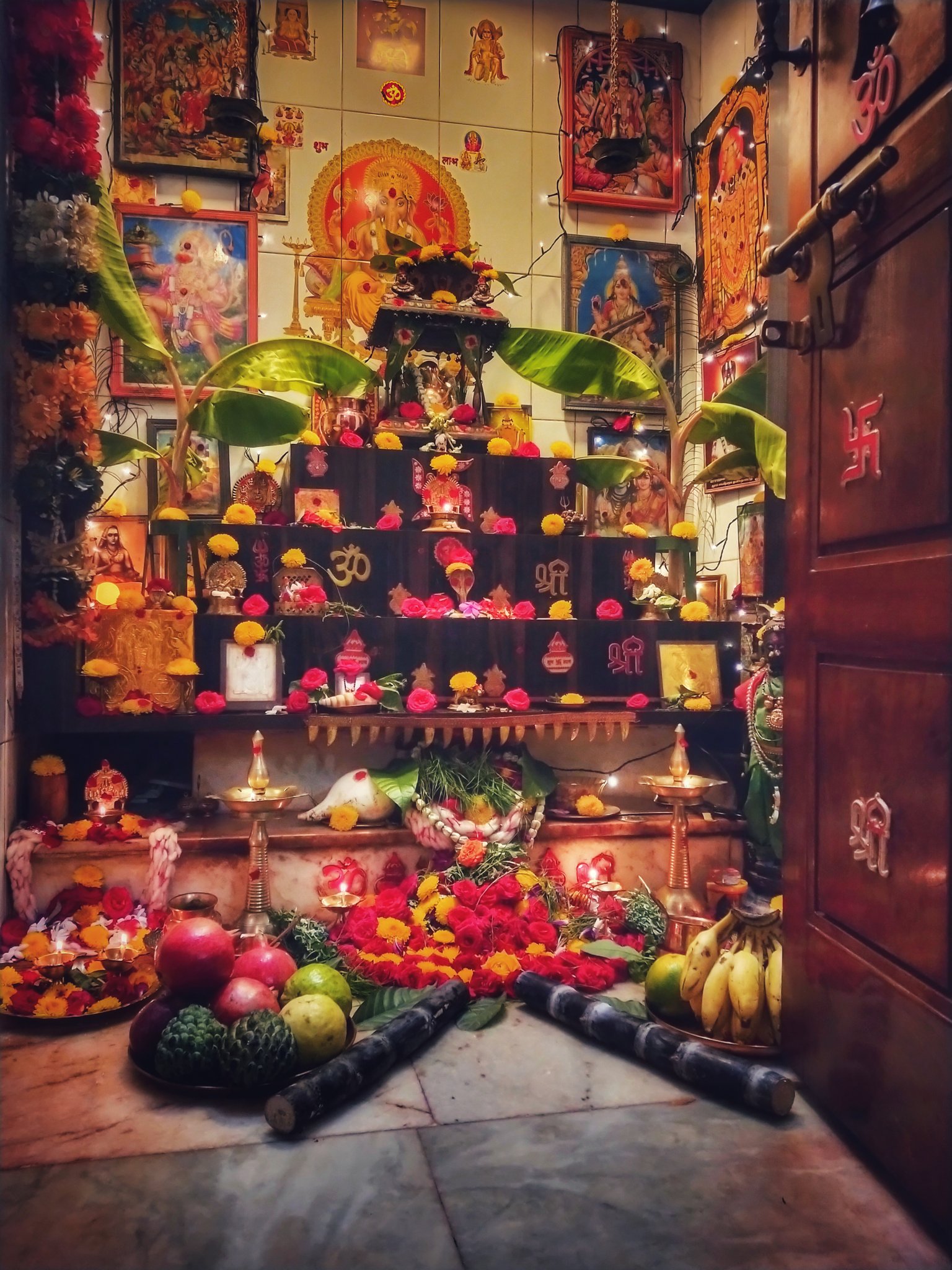 |
| Post the Puja |
Then we offer everything that has been cooked in form of Naivedhyam. We can chant om pranaya swaha apanaya swaha. This is followed up by Tambhula (betel leafes & nuts), Narikela (coconut) & Dakshina Samarpanam You can chant phugi phala samayuktam nagavalli mantra for Tambula.Then we perform a maha mangalaarathi for Ganesha followed by Pradakshina (parikrama) while chanting Yani kani cha paapani... This will conclude the Ganesha puja. This is a set of very elaborate rituals.
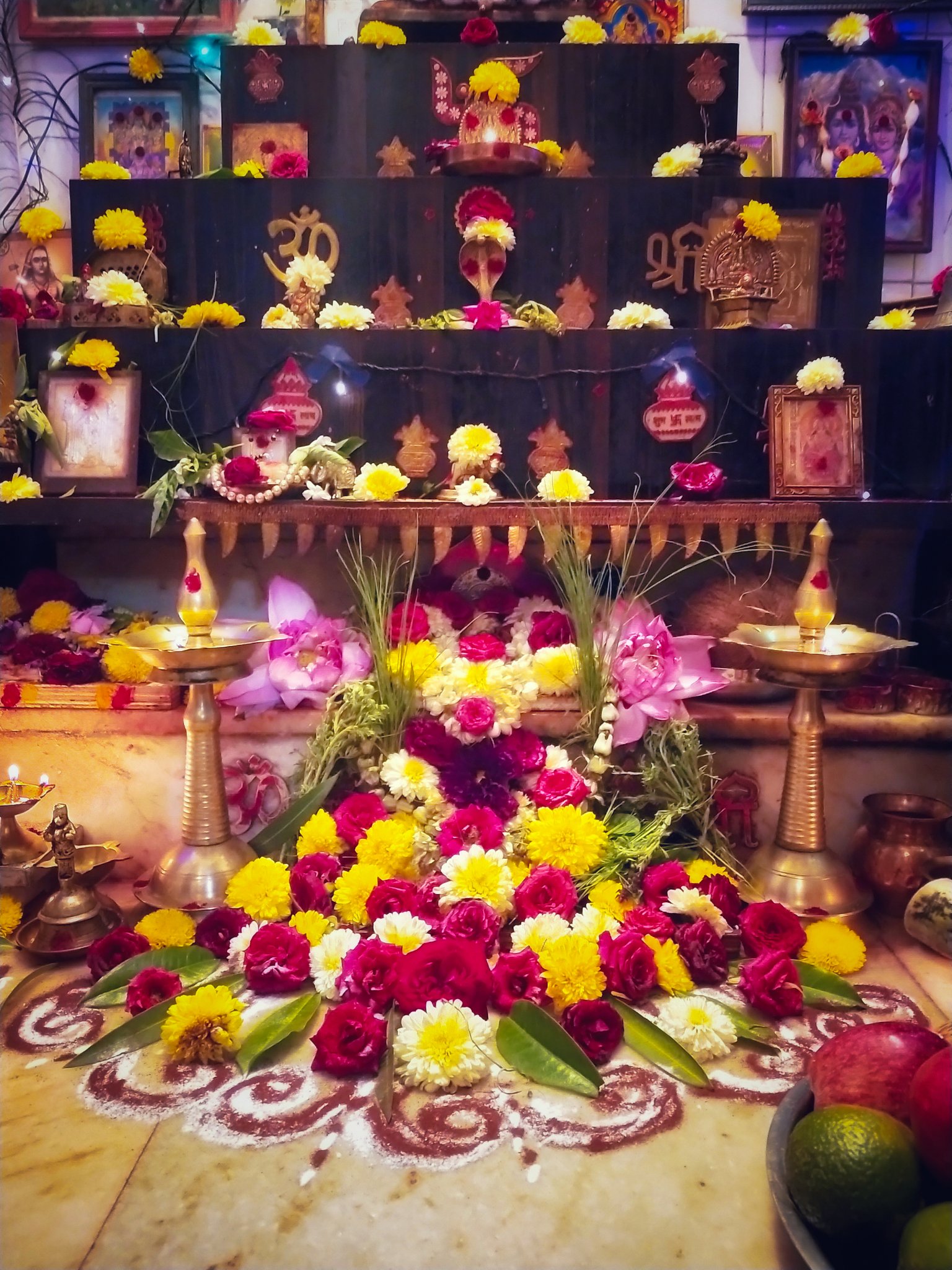 |
| Puja Alankara for Ganesha |
Syamantaka Upakhyana
The Ganesha puja is followed up in the evening by what is known as Syamantaka Upakhyana. It is a retelling of a story of the famous Syamantaka Mani. The one who recites it or just listens to this story is said to accumulate maha punya. It is a fascinating story.
The story connects Satrajitha, a devotee of Bhagavan Surya, Prasena his brother; Jambhavanta the bear & Bhagavan Krishna himself. The story goes something like this. Satrajitha who is a Yadava clansman receives the Syamantaka jewel from Lord Surya himself after intense tapasya. Wearing the Syamantaka Mani he then makes his way to Dwaraka where he is mistaken for Lord Surya himself, for such was the brilliance of the mani was radiating. Krishna asks Satrajitha to present the mani to Ugrasena, the Maharajadhiraja of the Yadavas.
Satrajitha refuses to part with the Syamantaka mani. Instead he gives it to his brother Prasena, who later when on a hunting expedition is killed by a lion. The lion in turn is killed by Jambhavanta the bear & he in turn takes possession of the Mani.
Back in Dwaraka, Satrajitha unfairly accuses Krishna of theft & murder shocking everyone. In order to put an end to such rumours, Krishna retraces the path of Prasena which leads him to Jambhavanta. There he engages in an epic battle for nearly a month. The exhausted Jambhavanta realises he is fighting none other than the next avatar of Lord Rama himself & surrenders. He gives away his daughter Jambavati in marriage to Krishna along with the mani. Krishna returns to Dwaraka & hands over the mani to an apologetic Satrajitha
In a gesture of making amends, Satrajitha gives away his daughter Sathyabhama in marriage to Krishna. The reason why Krishna had to undergo such an ordeal was because on one evening of Ganesha Chaturthi he accidentally has a darshana of just the reflection of Chandra (moon).
Chandra is previously cursed by Ganesha for being full of arrogance. It is said whoever accidentally has a darshana of Chandra on the evening of Chaturthi, if they recite this story or even listen to Syamantaka Upakhyana in its entirety, they will not undergo such ordeals.
Lord Krishna himself instructs Bhaktas to pray to Ganesha on Chaturthi day. This story has been told & retold in many different languages all across Bharat for thousands of years. We at home have been reciting the Syamantaka Upakhyana for generations.
Some pictures of Ganesha Chaturthi celebrations at home over the years..
